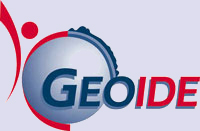Methodology
For Component 1
Assemble historical levelling surveys of tide gauges and local benchmarks, to determine differences in orthometric heights along the coasts, and compare them with present, published, ocean model results. Perform analyses of integrated heterogeneous data from space-based and traditional techniques in order to detect trends in sea level. Terrestrial stations will help to distinguish sea level changes due to glacial melting and ocean expansion from effects of post-glacial rebound and active tectonics. The most recent post-glacial rebound model will be used to verify and/or complement the analysis (ACQ#SID).
For Component 2
Assemble tide gauge and altimetry time series for the waters off Canada’s west and east coasts, and follow techniques developed and assembled by Foreman and Cherniawsky and their colleagues, to remove the tide, and form seasonal average elevation anomalies. We will attempt to eliminate other “high-frequency” noise based on previous work completed by Vanícek.
For Component 3
We have valuable marine gravity data sets that may not be compatible with land and/or altimetry data. We will use altimetry data from Topex/Poseidon and thorough analyses, to resolve any discrepancy. Preliminary evaluation of the marine gravity data from East Coast has already been completed.
For Component 4
Topex/Poseidon, ERS and new data from their follow-on missions (Jason-1, Envisat), will be merged to compute an optimal high-resolution mean SSH, and its error characteristics. Additional information on the contribution of ice sheets to the mean global sea level rise will be provided by ICESat, and the soon-to-be-launched CryoSat. This SSH will be used with a precise geoid model, Levitus and other hydrographic data to determine the SST.
For Component 5
The new satellite missions (CHAMP and GRACE) and future GOCE will make it possible to improve the geoid over the ocean: The geoid determination is still an essential component of the project.
For Component 6
Calculate seasonal mean SSH from ocean circulation models that have been forced with climatological salinity, temperature, and wind fields. Calibrate and validate these models with long-term current meter observations where possible. Use assimilation methods to integrate seasonal altimetry and coastal tide gauge averages into the dynamic models to improve the estimates of seasonal mean SSH. We will use the “frequency response analysis” for independent seasonal SST determination.
